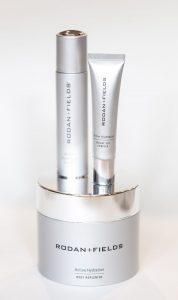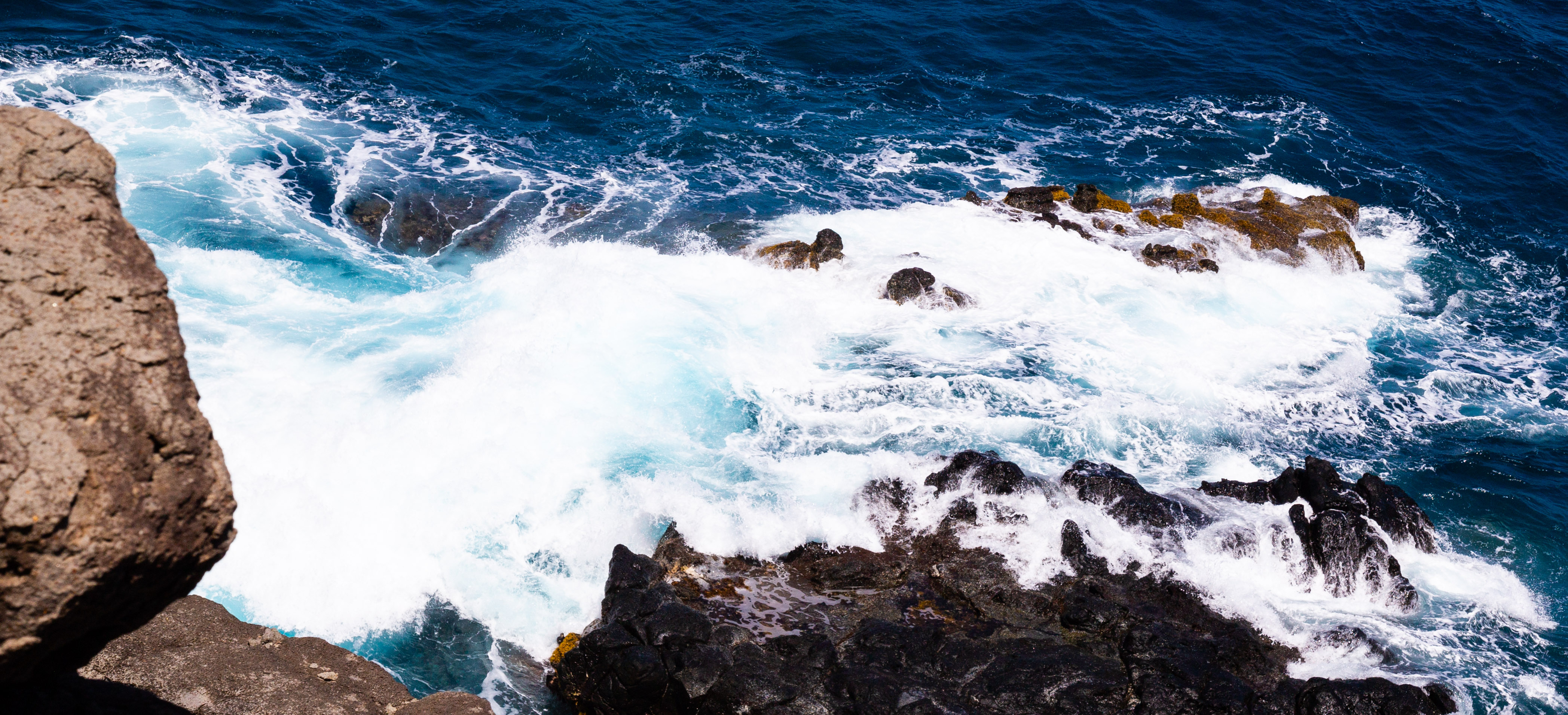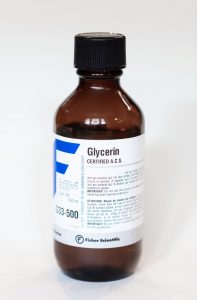
Glycerin
Have you ever seen glycerin, glycerine or glycerol listed in the ingredients of any of your skin care products? Ever wondered what it was doing there?
A Little Background:
First, glycerin, glycerine, and glycerol are used interchangeably, and they all are the same when it comes to skincare.
It is colorless, odorless and sweet-tasting. In fact, it is derived from the Greek word glyko which means “sweet”. Glycerin was discovered by a Swedish chemist named Carl Wilhelm Scheele in the late 1700’s and Proctor and Gamble started producing it around 1858.
Glycerin is formed naturally when your body utilizes stored fat (triglycerides) to produce energy. Your body will break down those fats and release glycerol and fatty acids into the bloodstream. The glycerol is converted to glucose in the liver and used for cellular energy.
Outside of your body, it can be formed naturally from fats and oils during soap and fatty acid manufacturing. It can also be formed during the production of biodiesel fuel.
Why is Glycerin in Your Skincare Products?
Glycerin is inexpensive, versatile, safe, non-irritating, and has some antibacterial properties (it’s a natural way to prolong the shelf-life of products). Plus, it’s a great moisturizer.
Along with hyaluronic acid, it is one of the most effective humectants (water magnets) in the personal care industry. It attracts moisture and helps the skin retain that moisture for over 24 hours.
In one five-year human study, two high-glycerin moisturizers were compared to 16 other popular moisturizers in 394 patients with severe dry skin.
The high-glycerin products performed better than all the other moisturizers tested. They more rapidly restored normal hydration and prevented dryness from returning for a longer period of time.

How Glycerin Works:
Humectants pull water out of the environment. But, that’s not all they do. In low-humidity, they will pull water from the deeper dermal layer of your skin up to the skin’s surface, where it can evaporate. When the water evaporates, the dryness returns. This becomes a problem in dry climates where you need more moisture.
You could apply an occlusive over the top of your moisturizer to prevent evaporation. Occlusives literally form a barrier between your skin and the air to prevent water loss.
Mineral oil and petrolatum are examples of occlusives.
Usually, though, occlusives are oily, shouldn’t be used on skin prone to acne, and they can rub off easily. Once they rub off they are no longer preventing water evaporation.
Manufacturers will often combine a humectant with an occlusive, along with other ingredients, to help trap more moisture in the skin for a longer period of time.
Moisturizers with Glycerin:
I have been using a few products that contain glycerin and hyaluronic acid for a few months now that I love.

Rodan and Fields Active Hydration Serum
Rodan and Fields Active Hyration Body Replenish
Rodan and Fields Active Hydration Bright Eye Complex
Rodan and Fields created a 3-Dimensional polymer network that entraps glycerin and hyaluronic acid.
This network, called 3D3P, creates greater water- and humectant-binding capabilities. That means more moisture can be deposited in the skin and that moisture will stick around longer.
Not only that, but these products can be used on any skin type from oily to dry.
I use the Active Hydration Bright Eye Complex in the morning, the Active Hydration Body Replenish all the time but especially at night, and the Active Hydration Serum in the evening especially after I have used my microneedler.
Other Products with Glycerin:
Skinceuticals Triple Lipid Restore
Skin Medica HA5 Skin Rejuvenating Hydrator
Lastly:
Glycerin is a great moisturizer and it is something that I am happy to see in the ingredients list of some of my favorite skin care products.

References
Baumann, L., MD. (2015). Cosmeceuticals and cosmetic ingredients. McGraw-Hill Education
This post may contain affiliate links. See my disclosure for more information.




One Comment
Jamey Barrenger
Excellent post. I used to be checking continuously this blog and I am inspired!
Extremely helpful info particularly the last part 🙂 I
handle such info a lot. I was looking for this particular information for a
long time. Thanks and good luck.